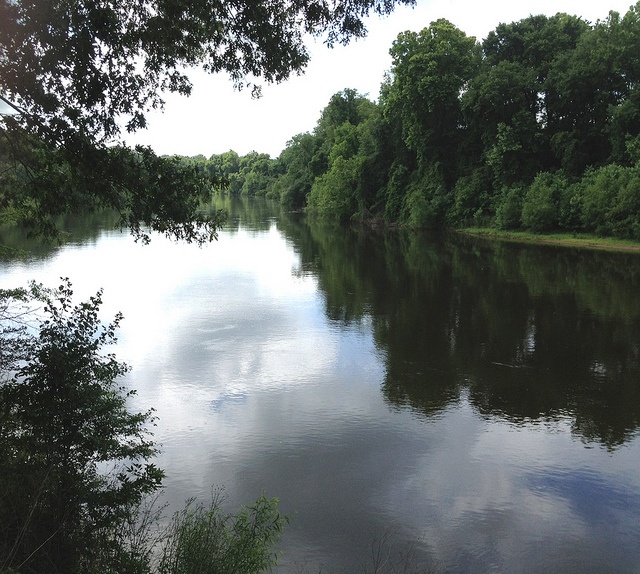S.C. cleanup results show there's hope after coal ash contamination

A SCE&G coal ash dump along the Wateree River in South Carolina was leaking pollution to groundwater. Since environmentalists turned to the courts to force a cleanup, levels of contaminants in groundwater at the site have dropped dramatically. (Photo of the Wateree River by the U.S. Department of Agriculture via Flickr.)
An environmental cleanup project underway in South Carolina shows that moving coal ash from leaky, unlined pits located along waterways leads to immediate, dramatic improvements in the groundwater contamination that's a widespread problem near coal ash dumpsites.
Following litigation by the Southern Environmental Law Center (SELC) on behalf of the Catawba Riverkeeper, S.C. Electric and Gas (SCE&G) agreed to remove the coal ash from massive pits at its Wateree plant on the banks of the Catawba-Wateree River near Columbia. The coal ash is being dried out and transferred to a lined landfill away from the river. The waste left over after burning coal for power, coal ash contains cancer-causing arsenic and other health-damaging chemicals.
To date, SCE&G has removed over 876,000 tons of coal ash from the site, about a third of what's there — and groundwater contamination at the site has plummeted, according to an SCE&G report released last week.
Just how much has contamination improved at the site? Check out these numbers from an SELC press release:
In one monitoring well, arsenic had contaminated the groundwater at 432 [parts per billion], or 43 times the legal limit. In the latest report, arsenic groundwater contamination has dropped to 2.9 ppb, or a 99 percent decrease. In another monitoring well, arsenic contamination was over 1000 ppb, ranging as high as 5000 ppb. In the latest report, arsenic contamination had dropped to 58.6 ppb, or at least a 95 percent reduction in arsenic contamination. Arsenic contamination has been the principal groundwater concern at the Wateree site. Other pollutants, including lead, cadmium, and sulfate, are also reported at lower levels.
"These results confirm that when you remove the polluting coal ash, you also eliminate pollution of groundwater," said Frank Holleman, SELC senior attorney.
Holleman said the results from South Carolina show what's possible next door in North Carolina, which this week marked the second anniversary of the massive coal ash spill into the Dan River from a waste pit at a shuttered power plant owned by Duke Energy, the state's leading power provider.
Facing citizen enforcement actions under the federal Clean Water Act, Duke Energy has agreed to clean up coal ash at seven of its 14 sites across North Carolina, all of which are leaking pollution to groundwater. But state regulators are still grappling with what to require Duke to do at the other seven sites.
Professional staff with the state Department of Environmental Quality (DEQ) said in an internal document from November that almost all of the company's coal ash dumps should be classified under state law as "high risk," requiring prompt removal of the ash to lined landfills away from rivers and lakes. But the agency's political leaders revised the draft ratings before they were released to the public at year's end so the company would have to undertake only one immediate site cleanup beyond what it already committed to. The coal ash at the other sites could potentially be left in place and covered, allowing groundwater contamination to continue.
DEQ will soon be accepting public comments on its proposed coal ash site ratings, with public hearings to be held next month in each county with a coal ash dumpsite (full list of scheduled meetings here). Comments can be submitted through April 18, though details about the process have not yet been released. DEQ will make a final decision on site ratings after sifting through the public comments.
"North Carolina's groundwater deserves the same protection as South Carolina's groundwater," said Sam Perkins, the Catawba Riverkeeper. "If we want to keep our rivers clean and protect our drinking water, we have to get the coal ash out of our groundwater and unlined pits."
Tags
Sue Sturgis
Sue is the former editorial director of Facing South and the Institute for Southern Studies.
